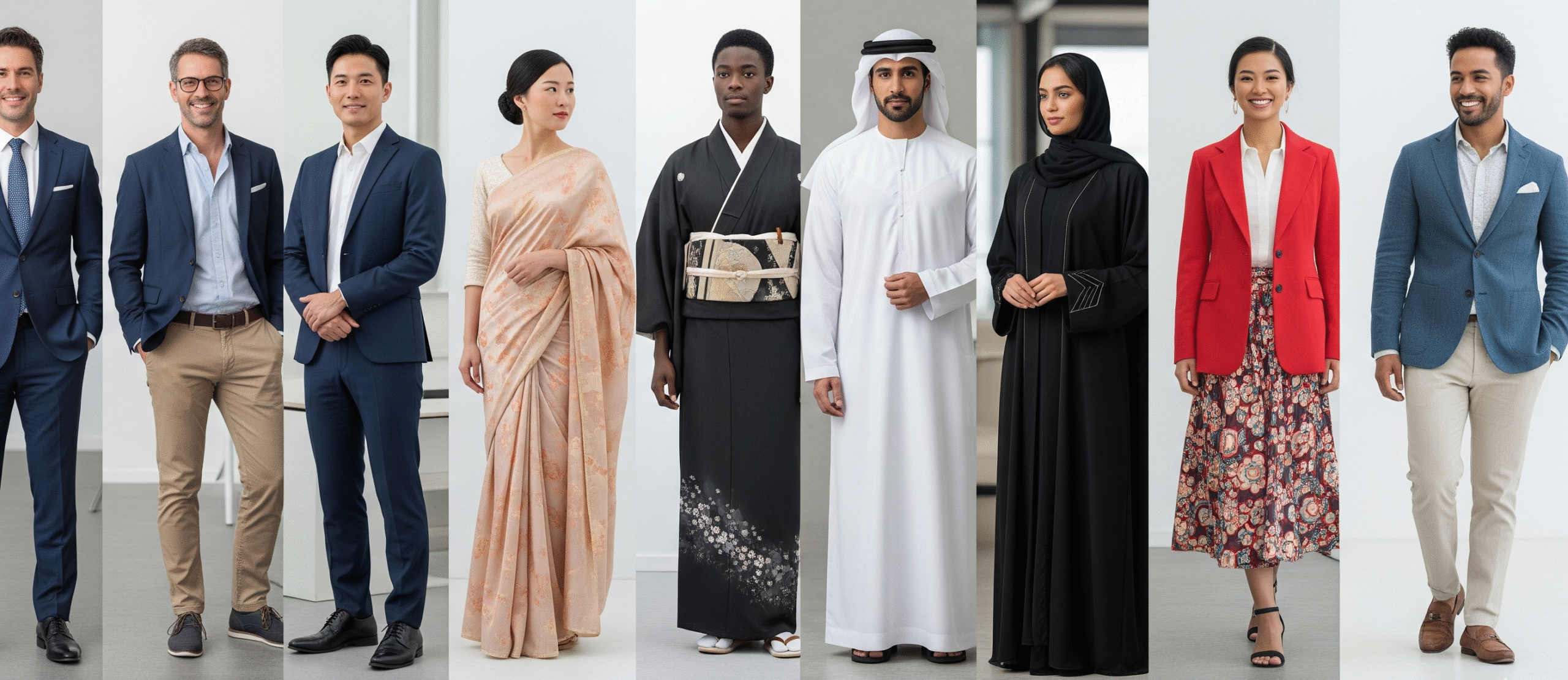Culture & Dress Codes: What Your Outfit Says Globally

Clothes aren’t just clothes—they’re messages. What you wear can signal respect, professionalism, or even carelessness, depending on where you are in the world. Let’s break down how dress codes reflect culture and what that means for you in global settings.
👔 Western Business Culture
In countries like the US, UK, and Canada, business casual is increasingly common.
A blazer with smart trousers or a neat shirt often signals professionalism.
Bright colors or creative styles may be acceptable in tech or creative industries.
🥻 Traditional Meets Modern (Asia)
In Japan, dark suits and conservative attire reflect respect and seriousness.
In India, formal wear may also include traditional clothing like a kurta or saree, showing cultural pride.
Bright colors and accessories are not considered “unprofessional” but rather a part of identity.
🕋 Middle Eastern Norms
Dress codes lean more conservative, with modesty highly valued.
Men often wear formal suits or national attire like a thobe.
Women may wear abayas, hijabs, or other coverings depending on the setting and country.
💃 Latin American Vibes
Appearance is often linked with confidence and social status.
Bright colors, polished shoes, and attention to grooming are key.
Business wear is formal but can be more stylish than in Northern cultures.
🎭 What Your Outfit Says About You
Professionalism: A neat, appropriate outfit shows you respect the environment.
Cultural Awareness: Adapting to local dress codes communicates sensitivity and intelligence.
Identity: Sometimes, wearing traditional or personal styles is a statement of pride.
✅ Why This Matters
In an interconnected world, you’ll likely collaborate with colleagues, clients, or peers from different cultures. Being aware of dress code norms avoids awkwardness and builds trust.
Final Takeaway
Your outfit is more than fabric—it’s a message. In one country, a colorful shirt may show creativity, while in another, it may look too casual. By understanding global dress codes, you’re not just dressing well—you’re dressing smart.
Next time you prepare for a meeting, event, or even a study abroad program, remember: your clothes don’t just speak for you; they introduce you before you even say a word.